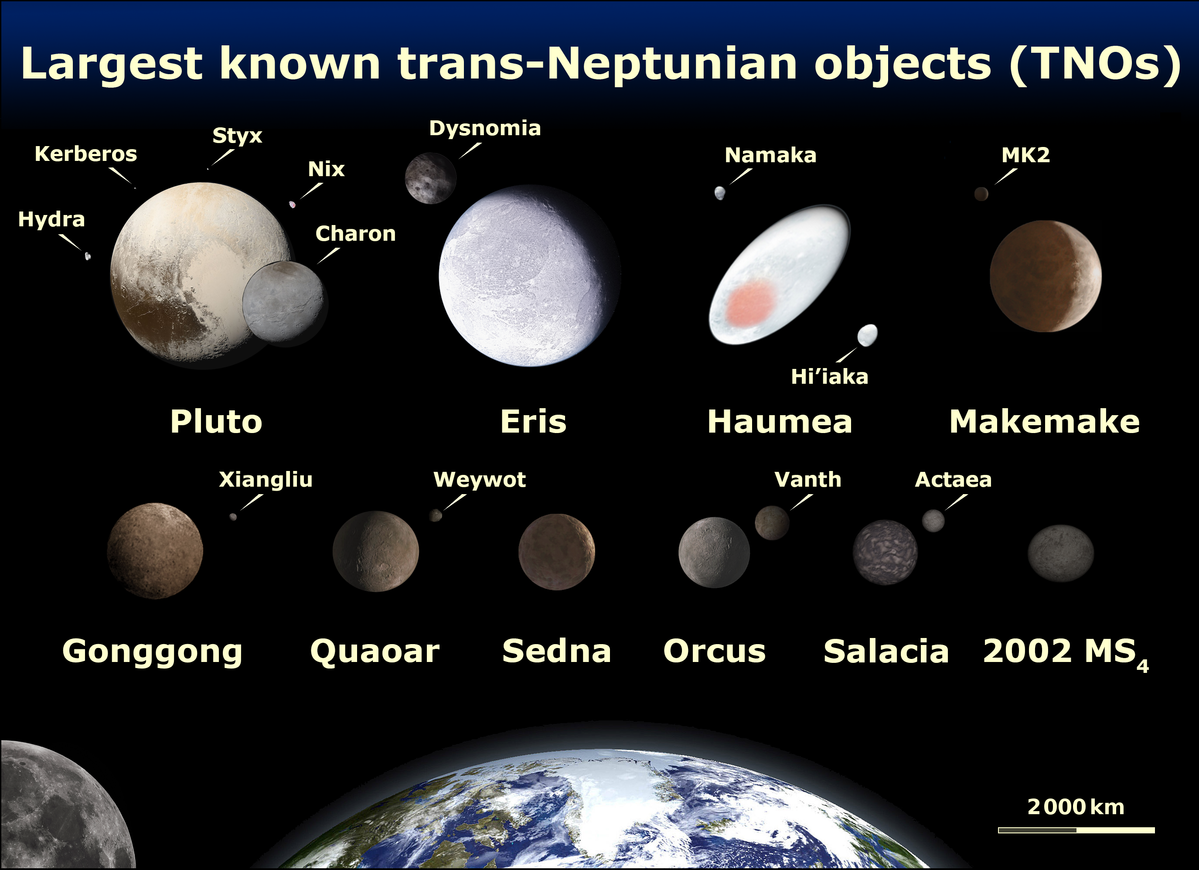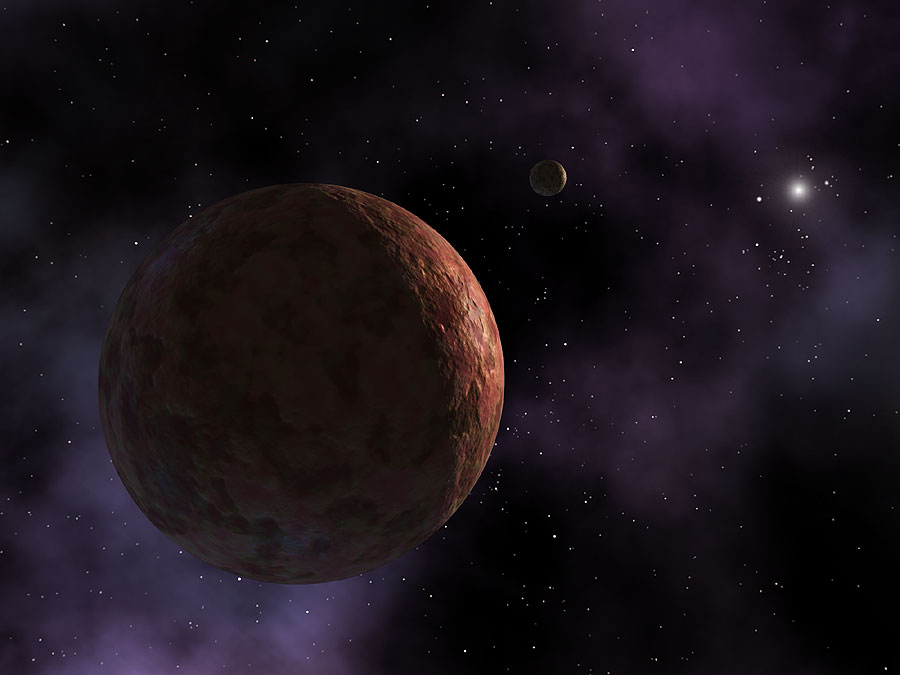
The Kuiper belt, sometimes called the Edgeworth-Kuiper belt, is a region of the Solar System beyond the planets extending from the orbit of Neptune (at 30 AU) to approximately 55 AU from the Sun. It is similar to the asteroid belt, although it is far larger; 20 times as wide and 20–200 times as massive. Like the asteroid belt, it consists mainly of small bodies (remnants from the Solar System’s formation). It is home to at least three dwarf planets – Pluto, Makemake and Eris. But while the asteroid belt is composed primarily of rock and metal, the Kuiper belt objects are composed largely of frozen volatiles (dubbed “ices”), such as methane, ammonia and water.
Since the first was discovered in 1992, the number of known Kuiper belt objects (KBOs) has increased to over a thousand, and more than 70,000 KBOs over 100 km in diameter are believed to reside there. The Kuiper belt was initially believed to be the main repository for periodic comets, those with orbits lasting less than 200 years. However, studies since the mid-1990s have shown that the Kuiper belt is dynamically stable, and that it is the farther scattered disc, a dynamically active region created by the outward motion of Neptune 4.5 billion years ago, that is their true place of origin. Scattered disc objects such as Eris are KBO-like bodies with extremely large orbits that take them as far as 100 AU from the Sun. The centaurs, comet-like bodies that orbit among the gas giants, are believed to originate there. Neptune’s moon Triton is believed to be a captured KBO. Pluto, a dwarf planet, is the largest known member of the Kuiper belt. Originally considered a planet, it is similar to many other objects of the Kuiper belt, and its orbital period is identical to that of the KBOs known as “Plutinos”.

The Kuiper belt should not be confused with the hypothesized Oort cloud, which is a thousand times more distant. The objects within the Kuiper belt, together with the members of the scattered disc and any potential Hills cloud or Oort cloud objects, are collectively referred to as trans-Neptunian objects (TNOs).

Sedna, a large planetoid in the outskirts of the solar system.
Source of the article: Kuiper belt – Wikipedia. Published under the terms of the GNU Free Documentation License, Version 1.2
